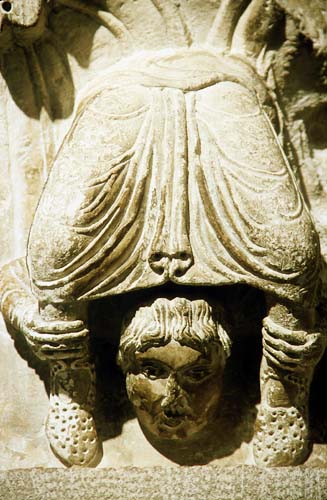 |
 |
|
Monastic Church Tucked away on an obscure mountain road near Cluny, France is an ancient Benedictine romanesque church built in 1000, seldom visited but cherished by the local country folk. Built by humble means, its masonry is fundamental and simple, undressed stone and mortar - but even so, convincingly eloquent. The first glance inside this tiny village church is overwhelming, because of what appears a shocking disproportionateness. This is due to the presence of a series of massive columns in the nave which might well be found inside a cathedral rather than holding up the vault of a very modestly proportioned church. However, these are necessary for the tower over the crossing which is three times higher than would ordinarily be expected for a building this size. The resulting contradiction between small volume and massive inner supports immediately produces a sense of being somewhere where there is invisible and intense work going on. One can't help but feel affection for the monks who built it. An inscription over the door could read, "Built by sincerity and made to last." Chapaize also brings into sharp relief the tangible distinction between consciously created and mechanically repeated work. It is not the outer appearance, whether architectural or related to any other piece of experience, that produces the conscious shock for a human. It is the inexactitude of the rhythmic ratio from one part to another which is nonetheless stabilized by the law that this particular change in equilibrium demonstrates. And it is within this unexpectedness that one receives whatever message may be encoded in the artifact. |
 Next
Next |